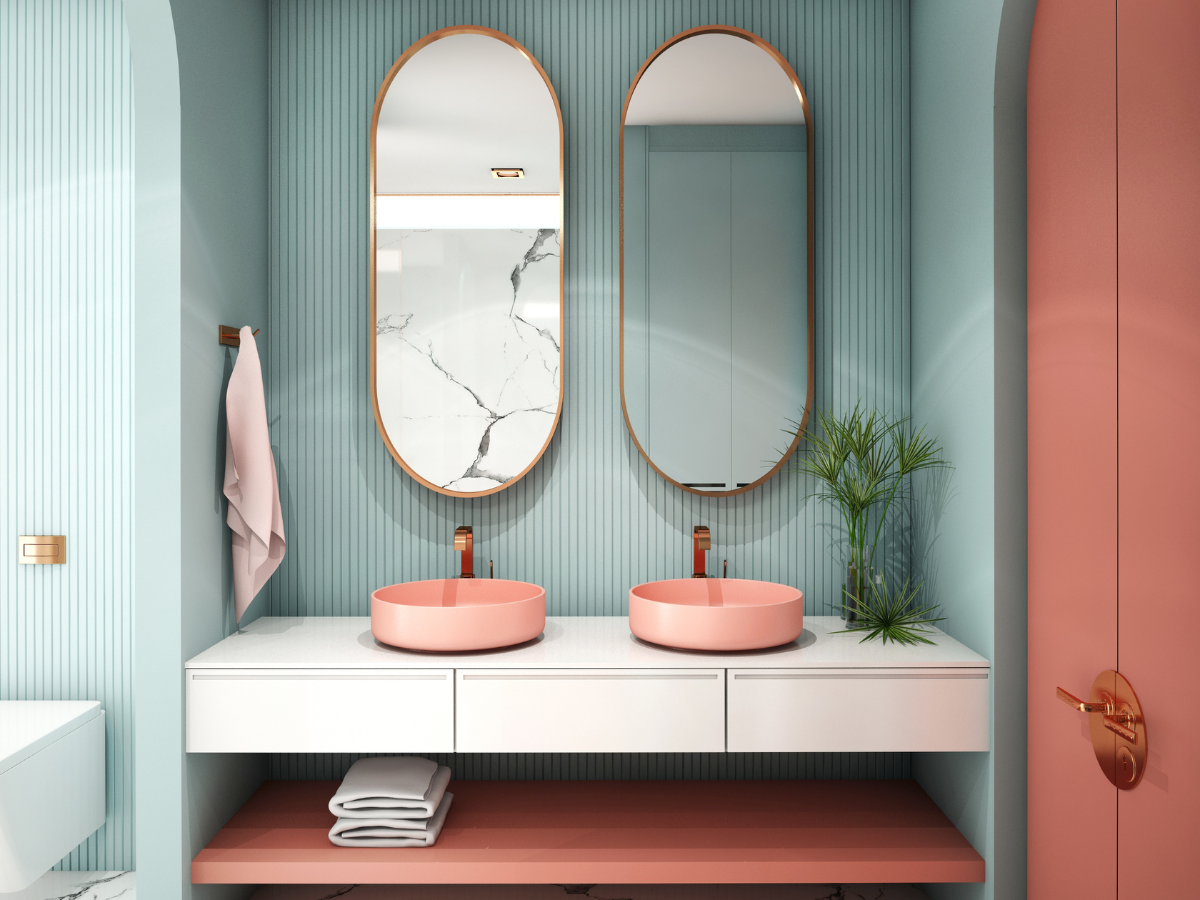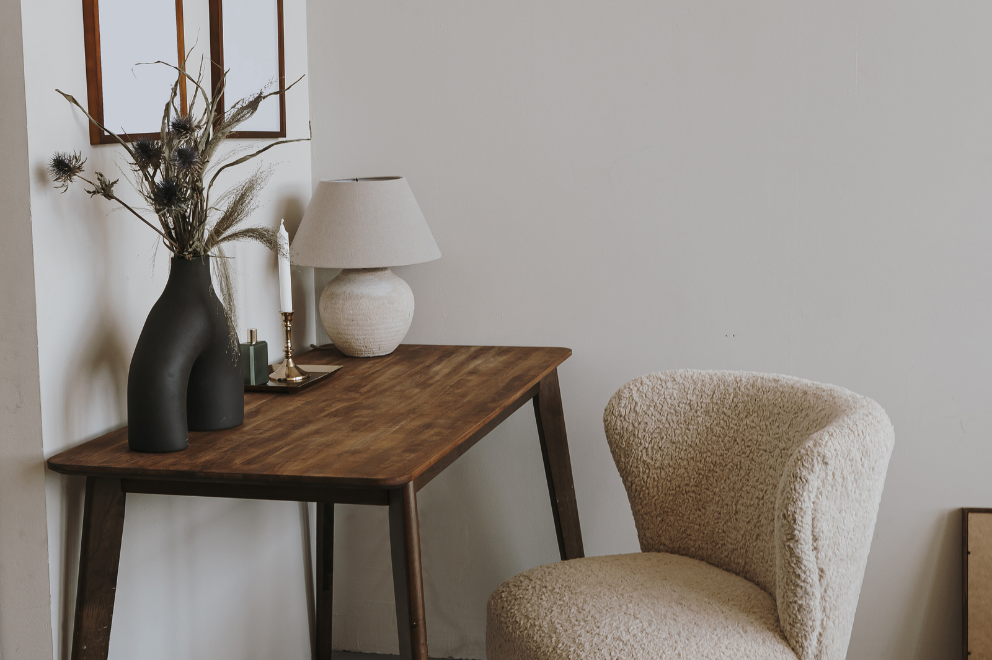
How to avoid trends in interior design is a common concern for those who wish to create a timeless space that reflects personal style. Trends come and go, but designing a home that remains stylish and relevant is a goal worth pursuing.
Avoiding trends can be challenging, but with the right approach, you can craft a home that feels fresh and inviting for years to come.
In this blog post, we’ll explore strategies to help you steer clear of trends and create a lasting interior design.

Before we get into how to avoid trends, we need to understand why they’re a problem. Trendy design is all about bold, attention grabbing elements that go out of style fast. Bright colours, quirky patterns and unique textures may seem exciting at first but can lose their appeal just as quick as they became popular.
This means you’ll have a space that feels dated and in need of constant updates which can be expensive and time consuming. For example redoing a trendy kitchen every few years to keep up with the latest styles can put a huge strain on your budget and your time.
Also trendy design often lacks the personal touch and character that makes a house a home. Because trends are driven by media and market forces, they often don’t reflect personal style and taste. Homes designed around trends can feel impersonal, resembling a magazine spread instead of reflecting their occupants.
Another risk of following trends is that they can create a lack of cohesion in a home’s overall look. When a space is designed solely based on what’s currently popular it can end up looking like a jigsaw puzzle of different styles, each piece competing for attention rather than working together as a whole. This can create visual clutter and confusion and make the space feel uncomfortable and chaotic.
Plus the pressure to constantly update and follow trends can be exhausting. It can create a sense of dissatisfaction with your current space and lead to a never ending cycle of redecorating and renovating. Instead of enjoying your home you’ll find yourself constantly searching for the next big thing and always feeling like your space is never quite “good enough”.
In the long run trendy design can also have a negative impact on the environment. Constantly replacing decor and furniture to keep up with trends creates waste and increases the demand for mass produced, disposable products.
By choosing timeless, sustainable design you can reduce your environmental footprint and create a home that’s beautiful and meaningful.
Now you know why. So make intentional design choices that go beyond the trend. Timelessness, personal style and sustainability. You’ll have a space that’s beautiful and a home.
First step to avoiding trends is to know your style. Take time to think about what design elements you’re drawn to, colours, textures, furniture styles. Create a mood board or inspiration folder to help you visualise your style. By focusing on your own style you’ll be less tempted to follow the latest fads.
Trends are often about cheap, mass produced items that won’t stand the test of time. Instead of following trends invest in quality pieces that will last. Look for well made furniture, timeless art and durable materials like natural stone or hardwood. These will pay off in the long run as you’ll be able to enjoy them for years to come.
Mixing old and new is a sure fire way to create a timeless interior design. Add an antique or vintage piece with modern furniture to create a layered, interesting space. This way you avoid trends and add depth to your home. Don’t be afraid to mix different styles and eras to create a look that’s your own.
Neutral colour palettes are a classic that will never go out of style. Whites, beiges, greys and blacks are a versatile base for your interior design. You can then add pops of colour through accessories, textiles and art which are easier to change as trends evolve. Neutral palettes also create a calm and serene atmosphere that promotes relaxation and comfort.
Wood, stone and linen are timeless choices that will never go out of style. These add warmth, texture and depth to your interior design. Use natural materials in your flooring, furniture and decor to create a cohesive, organic look. Natural materials are also eco friendly and sustainable.
Avoiding trends in interior design requires a thoughtful and intentional approach. By focusing on timeless elements, incorporating personal touches, balancing functionality and aesthetics, avoiding over-accessorizing, seeking inspiration from nature, and investing in quality over quantity, you can create a beautiful and timeless home that will remain stylish for years to come.
Remember, the key to a truly timeless interior design is to focus on what makes you and your space unique, rather than following the latest trends.

How to avoid trends in interior design is essential because trends are fleeting, and what’s in today will be out tomorrow. They are born from designers, media, and retailers, cycling in and out of fashion. Trends are basically styles that capture our attention temporarily before being replaced by something new.
Many of the trends we see today are just modern versions of styles that were once labeled “out of fashion.” So, instead of following trends, focus on what resonates with you personally.
One of the biggest downsides of following trends is the cost. Constantly updating your home to keep up with the latest trends can be expensive, resulting in frequent purchases of new furniture, decor and accessories.
This can also be wasteful and contribute to a throw away culture that has negative environmental impacts. Investing in timeless, high quality pieces saves money in the long run and is sustainable.
Another problem with trends is they can lead to a lack of individuality. Trend driven designs result in homes that look like so many others, lacking a personal touch or character.
When a style becomes popular it can quickly become overused and your home can get lost in the crowd and not reflect your personality. Focusing on what truly resonates with you, regardless of its popularity, allows you to create a space that’s yours alone.
Trends can also create a sense of instability and dissatisfaction. The pressure to stay current can lead to a cycle of change where you never feel fully satisfied with your home.
This constant need to update can prevent you from enjoying and appreciating your space as it is. A design that’s rooted in your personal preferences and timeless principles gives you a sense of comfort and contentment that trends can’t.
Also trendy designs often prioritise appearance over functionality. While a trend might look good in a magazine or online it may not suit your lifestyle or meet your practical needs.
For example an all white minimalist aesthetic might look great but would be impractical for a family with young children or pets. Prioritising functionality and comfort means your home works for you and your lifestyle not just looks good.
Now you know the pitfalls so you can make better choices for your space. Instead of following what’s in fashion, focus on what makes you feel comfortable, happy and at home. After all the most beautiful spaces are the ones that reflect the people who live in them not the latest trend.
The golden rule in interior design is to create a balance between aesthetics and functionality. This means ensuring that the design not only looks visually appealing but also serves the practical needs of the space and its occupants. Achieving this balance is crucial to creating a harmonious and functional interior space.
Timeless interior design is characterized by a focus on classic elements, simplicity, and a lack of trendy or overly ornate features. It often incorporates neutral colors, clean lines, and high-quality materials that do not quickly go out of style. Additionally, timeless designs often prioritize functionality and comfort, making them enduring and adaptable to changing tastes and needs.
To create a timeless interior design, focus on using classic and simple elements, such as neutral colors, clean lines, and high-quality materials. Avoid incorporating trendy or overly ornate features that may quickly go out of style. Prioritize functionality and comfort, and consider incorporating timeless design principles such as balance, proportion, and harmony. This approach will help you create a space that remains beautiful and functional for years to come.
Interior design trends often develop in response to cultural, social, and technological changes. They can be influenced by factors such as fashion, art, and architecture, as well as shifts in lifestyle and consumer preferences. Trends can also be driven by the work of influential designers, the introduction of new materials and technologies, and the popularity of certain styles or aesthetics on social media and in design publications.
How to avoid trends in interior design is all about focusing on quality, personal style, and timeless pieces. Invest in well-made furniture, mix old and new elements, use neutral palettes, and incorporate natural materials to create a design that will last. Remember, your home should reflect your unique personality, not the latest craze. By keeping these principles in mind, you’ll be well on your way to achieving a design you’ll love for years to come.

Sophia Bennett, holding a degree in interior design from UCLA, has become a master of minimalist home aesthetics. Since 2014, her work has focused on creating tranquil, clutter-free spaces. Sophia joined our editorial team in 2019, sharing her expertise on serene, airy interiors. When not writing, she enjoys painting landscapes that reflect her love for simplicity.

Hi there! I’m Aisha Harper. With a background in exploring breathtaking destinations and a deep appreciation for creating warm, inviting spaces, I’ve combined my passion for adventure and home into a fulfilling career. From scaling mountains to styling living rooms, I love blending the thrill of the outdoors with the comfort of home, inspiring others to do the same.